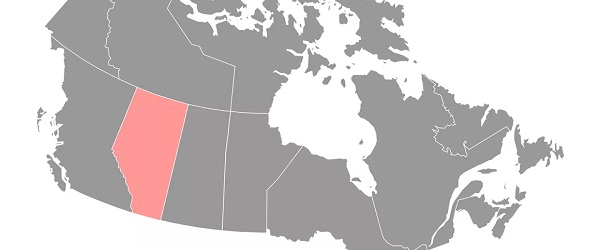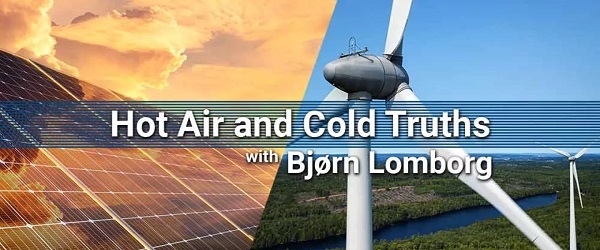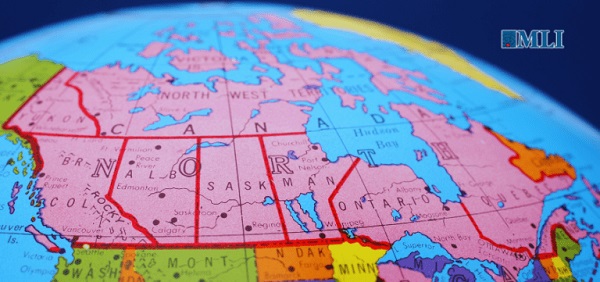Alberta
‘Liberal’ parents of gender-confused kids among supporters of Alberta’s proposed ‘transitioning’ ban

From LifeSiteNews
Parents whose kids have undergone medical or surgical ‘transitioning’ say that Premier Danielle Smith’s policies will spare other families from ‘the heartache their families have been through.’
As highlighted in a recent Epoch Times report, parents whose kids have undergone medical or surgical “transitioning” say that Smith’s new policies will only benefit families in general and spare them from “the heartache their families have been through.”
On January 31, Smith announced what is perhaps the strongest pro-family legislation in Canada, protecting kids from life-altering so-called “top and bottom” surgeries as well as other extreme forms of transgender ideology.
According to Crystal, a mom from Calgary, her son Noah, when he was in Grade 9, had a friend who made a “transition” from a female to a male. Her son had noted he was what is called a “trans ally,” but suddenly he began to identify himself as “she/they.”
“Fast forward to the early part of Grade 10, and out of the blue I get a text from my kid while he’s at school saying, ‘I’m now identifying as she/they,’” said Crystal, who said she is “quite a liberal parent.”
However, despite being a “liberal,” she admitted that she did not have an easy time with her son changing names and using different pronouns.
“Out of the blue is this vitriol towards me when I didn’t get it right,” she said, adding she then just decided to call her son “kiddo.”
However, Noah then told her he wanted hormones. Crystal and her ex-husband had thought Noah was just going through a phase, as he was “well known” for this.
“He would try on different so-called ‘identities’ like a jock, a nerd, a rapper,” Crystal said, and even as he was supposed to be “transitioning,” took on a look of a “goth.”
According to Crystal, her son did not “even remotely” show signs of wanting to change genders before.
Alberta’s forthcoming regulations include a ban on so-called “top” surgeries (mastectomies, breast constructions) as well as “bottom” surgeries (vaginoplasties, phalloplasties) for children ages 17 and under. Puberty blockers and cross-sex hormones are also restricted to those age 16 and older but only with parental consent.
Smith said her United Conservative Party (UCP) government will soon introduce legislation that, if passed, would bar doctors in the province from medically or surgically “transitioning” children under age 17. The new legislation will also mandate parental consent for pronoun changes in school. Coming in the fall will be additional legislation that bans men who claim to be women from competing in women’s sports.
Campaign Life Coalition (CLC) praised Smith’s decision to introduce legislation to ban doctors from chemically or surgically “transitioning” children, calling it a “political miracle.”
Crystal’s line in the sand for her son: ‘No medical affirmation’
When the Alberta government was researching its new policy regarding banning surgically or chemically “transitioning” children, Crystal said she was one of the parents they talked with to get feedback.
She admits at the time she was not a fan of Smith or her party, but now says she is “doing this right.”
Crystal noted that if this policy had been in place only three years ago, all the heartache could have been avoided.
“This is blowing up relationships,” she said.
When speaking to her son, Crystal noted that her “line in the sand will always be [that] there will be no medical affirmation.”
As a result, she then said she was “hit with the vitriol.”
Due to Crystal having had to deal with her son wanting to become something other than his birth sex, she contacted parents with similar situations via a group called Our Duty.
After connecting with parents on the site, Crystal noted how her son Noah “checks a lot of the boxes” with other kids who say they are transgender.
She said that kids in these situations all use the same “script” of saying they are going to “kill myself if I don’t get the proper medical intervention if you don’t use the pronouns.”
“It’s the constant threat of suicide,” she noted.
Complaint filed against doctor who gave hormones
Despite Crystal trying to delay her son wanting to undergo a “medical transitioning,” she did book an appointment with a doctor to talk about hormones.
However, after being referred to a clinic to further talk about her son’s matter, she said the personnel were “aggressive.”
Crystal noted how the clinic was constantly emailing and calling her to make an appointment for her son, and she was told she had to have all the paperwork and blood work done before the meeting.
She said that this made “no sense,” so she told the clinic that she was “not signing a consent form.”
When she went to the appointment with her son, she was taken to a room with a doctor alone and was told that this appointment was not for her but for Noah.
The doctor only spoke with her for 10 minutes and was already willing to prescribe her son hormones. At this point, she confronted the doctor for not doing a thorough psychological assessment or any other screening. The doctor mentioned to her that while she was able to oppose the treatment, she could end up in the courts and that he would testify on Noah’s behalf. He then said he had always won in similar situations with other parents.
Crystal filed a complaint with the College of Physicians and Surgeons of Alberta against the doctor regarding her experience with her son, but for the time being, is not making public his name.
Her son later went to that doctor alone and started to take hormones. It was at this point she realized she had no control over the situation.
Crystal said that in the past her family doctor along with a child psychologist did not affirm Noah’s gender dysphoria. She noted that it was only the “gender experts,” all of whom had “zero history with my child,” who suggested this.
“They did not solicit the qualified professionals we had in place,” she said.
As for Noah, who is now in grade 12, the doctor who had the complaint against him told Noah that it was his mom who did this, which made her son mad.
“I will never forgive you for this,” he told her.
He then ran away from home and told people that he was not “safe” at home with his mom.
“I just want to be your mom,” she had mentioned to him.
While many so-called “gender-affirming care” workers claim that the effects of puberty blockers can be reversed, according to Dr. Jane Anderson, vice president of the American College of Pediatricians, as per The Epoch Times, the hormones can severely impact brain development.
Puberty blockers can cause heightened depression, severe mood swings, and weight gain.
2025 Federal Election
The High Cost Of Continued Western Canadian Alienation

From EnergyNow.Ca
By Jim Warren
Energy Issues Carney Must Commit to if He Truly Cares About National Cohesion and be Different From Trudeau
If the stars fail to align in the majority of Western Canada’s favour and voters from Central Canada and the Maritimes re-elect a Liberal government on April 28, it will stand as a tragic rejection of the aspirations of the oil producing provinces and a threat to national cohesion.
As of today Mark Carney has not clearly and unequivocally promised to tear down the Liberal policy wall blocking growth in oil and gas exports. Yes, he recently claimed to favour energy corridors, but just two weeks earlier he backtracked on a similar commitment.
There are some promises Carney hopefully won’t honour. He has pledged to impose punitive emissions taxes on Canadian industry. But that’s supposedly alright because Carney has liberally sprinkled that promise with pixie dust. This will magically ensure any associated increases in the cost of living will disappear. Liberal wizardry will similarly vaporize any harm Carbon Tax 2.0 might do to the competitive capacity of Canadian exporters.
Carney has as also promised to impose border taxes on imports from countries that lack the Liberals’ zeal for saving the planet. These are not supposed to raise Canadians’ cost of living by much, but if they do we can take pride in doing our part to save the planet. We can feel good about ourselves while shopping for groceries we can’t afford to buy.
There is ample bad news in what Carney has promised to do. No less disturbing is what he has not agreed to do. Oil and gas sector leaders have been telling Carney what needs to be done, but that doesn’t mean he’s been listening.
The Build Canada Now action plan announced last week by western energy industry leaders lays out a concise five-point plan for growing the oil and gas sector. If Mark Carney wants to convince his more skeptical detractors that he is truly concerned about Canadian prosperity, he should consider getting a tattoo that celebrates the five points.
Yet, if he got onside with the five points and could be trusted, would it not be a step in the right direction? Sure, but it would also be great if unicorns were real.
The purpose of the Build Canada Now action plan couldn’t be much more clearly and concisely stated. “For the oil and natural gas sector to expand and energy infrastructure to be built, Canada’s federal political leaders can create an environment that will:
1. Simplify regulation. The federal government’s Impact Assessment Act and West Coast tanker ban are impeding development and need to be overhauled and simplified. Regulatory processes need to be streamlined, and decisions need to withstand judicial challenges.
2. Commit to firm deadlines for project approvals. The federal government needs to reduce regulatory timelines so that major projects are approved within 6 months of application.
3. Grow production. The federal government’s unlegislated cap on emissions must be eliminated to allow the sector to reach its full potential.
4. Attract investment. The federal carbon levy on large emitters is not globally cost competitive and should be repealed to allow provincial governments to set more suitable carbon regulations.
5. Incent Indigenous co-investment opportunities. The federal government needs to provide Indigenous loan guarantees at scale so industry may create infrastructure ownership opportunities to increase prosperity for communities and to ensure that Indigenous communities benefit from development.”
As they say the devil is often in the details. But it would be an error to complicate the message with too much detail in the context of an election campaign. We want to avoid sacrificing the good on behalf of the perfect. The plan needs to be readily understandable to voters and the media. We live in the age of the ten second sound bite so the plan has to be something that can be communicated succinctly.
Nevertheless, there is much more to be done. If Carney hopes to feel welcome in large sections of the west he needs to back away from many of promises he’s already made. And there are many Liberal policies besides Bill C-69 and C-48 that need to be rescinded or significantly modified.
Liberal imposed limitations on free speech have to go. In a free society publicizing the improvements oil and gas companies are making on behalf of environmental protection should not be a crime.
There is a morass of emissions reduction regulations, mandates, targets and deadlines that need to be rethought and/or rescinded. These include measures like the emissions cap, the clean electricity standard, EV mandates and carbon taxes. Similarly, plans for imposing restrictions on industries besides oil and gas, such as agriculture, need to be dropped. These include mandatory reductions in the use of nitrogen fertilizer and attacks (thus far only rhetorical) on cattle ranching.
A good starting point for addressing these issues would be meaningful federal-provincial negotiations. But that won’t work if the Liberals allow Quebec to veto energy projects that are in the national interest. If Quebec insists on being obstructive, the producing provinces in the west will insist that its equalization welfare be reduced or cancelled.
Virtually all of the Liberal policy measures noted above are inflationary and reduce the profitability and competitive capacity of our exporters. Adding to Canada’s already high cost of living on behalf of overly zealous, unachievable emissions reduction goals is unnecessary as well as socially unacceptable.
We probably all have our own policy change preferences. One of my personal favourites would require the federal government to cease funding environmental organizations that disrupt energy projects with unlawful protests and file frivolous slap suits to block pipelines.
Admittedly, it is a rare thing to have all of one’s policy preferences satisfied in a democracy. And it is wise to stick to a short wish list during a federal election campaign. Putting some of the foregoing issues on the back burner is okay provided we don’t forget them there.
But what if few or any of the oil and gas producing provinces’ demands are accepted by Carney and he still manages to become prime minister?
We are currently confronted by a dangerous level of geopolitical uncertainty. The prospects of a global trade war and its effects on an export-reliant country like Canada are daunting to say the least.
Dividing the country further by once again stifling the legitimate aspirations of the majority of people in Alberta and Saskatchewan will not be helpful. (I could add voters from the northeast and interior of B.C., and southwestern Manitoba to the club of the seriously disgruntled.)
2025 Federal Election
Next federal government should recognize Alberta’s important role in the federation

From the Fraser Institute
By Tegan Hill
With the tariff war continuing and the federal election underway, Canadians should understand what the last federal government seemingly did not—a strong Alberta makes for a stronger Canada.
And yet, current federal policies disproportionately and negatively impact the province. The list includes Bill C-69 (which imposes complex, uncertain and onerous review requirements on major energy projects), Bill C-48 (which bans large oil tankers off British Columbia’s northern coast and limits access to Asian markets), an arbitrary cap on oil and gas emissions, numerous other “net-zero” targets, and so on.
Meanwhile, Albertans contribute significantly more to federal revenues and national programs than they receive back in spending on transfers and programs including the Canada Pension Plan (CPP) because Alberta has relatively high rates of employment, higher average incomes and a younger population.
For instance, since 1976 Alberta’s employment rate (the number of employed people as a share of the population 15 years of age and over) has averaged 67.4 per cent compared to 59.7 per cent in the rest of Canada, and annual market income (including employment and investment income) has exceeded that in the other provinces by $10,918 (on average).
As a result, Alberta’s total net contribution to federal finances (total federal taxes and payments paid by Albertans minus federal money spent or transferred to Albertans) was $244.6 billion from 2007 to 2022—more than five times as much as the net contribution from British Columbians or Ontarians. That’s a massive outsized contribution given Alberta’s population, which is smaller than B.C. and much smaller than Ontario.
Albertans’ net contribution to the CPP is particularly significant. From 1981 to 2022, Alberta workers contributed 14.4 per cent (on average) of total CPP payments paid to retirees in Canada while retirees in the province received only 10.0 per cent of the payments. Albertans made a cumulative net contribution to the CPP (the difference between total CPP contributions made by Albertans and CPP benefits paid to retirees in Alberta) of $53.6 billion over the period—approximately six times greater than the net contribution of B.C., the only other net contributing province to the CPP. Indeed, only two of the nine provinces that participate in the CPP contribute more in payroll taxes to the program than their residents receive back in benefits.
So what would happen if Alberta withdrew from the CPP?
For starters, the basic CPP contribution rate of 9.9 per cent (typically deducted from our paycheques) for Canadians outside Alberta (excluding Quebec) would have to increase for the program to remain sustainable. For a new standalone plan in Alberta, the rate would likely be lower, with estimates ranging from 5.85 per cent to 8.2 per cent. In other words, based on these estimates, if Alberta withdrew from the CPP, Alberta workers could receive the same retirement benefits but at a lower cost (i.e. lower payroll tax) than other Canadians while the payroll tax would have to increase for the rest of the country while the benefits remained the same.
Finally, despite any claims to the contrary, according to Statistics Canada, Alberta’s demographic advantage, which fuels its outsized contribution to the CPP, will only widen in the years ahead. Alberta will likely maintain relatively high employment rates and continue to welcome workers from across Canada and around the world. And considering Alberta recorded the highest average inflation-adjusted economic growth in Canada since 1981, with Albertans’ inflation-adjusted market income exceeding the average of the other provinces every year since 1971, Albertans will likely continue to pay an outsized portion for the CPP. Of course, the idea for Alberta to withdraw from the CPP and create its own provincial plan isn’t new. In 2001, several notable public figures, including Stephen Harper, wrote the famous Alberta “firewall” letter suggesting the province should take control of its future after being marginalized by the federal government.
The next federal government—whoever that may be—should understand Alberta’s crucial role in the federation. For a stronger Canada, especially during uncertain times, Ottawa should support a strong Alberta including its energy industry.
-

 Economy2 days ago
Economy2 days agoSupport For National Pipelines And LNG Projects Gain Momentum, Even In Quebec
-

 Health2 days ago
Health2 days agoDr. Pierre Kory Exposes the Truth About the Texas ‘Measles Death’ Hoax
-

 Business1 day ago
Business1 day agoDOGE discovered $330M in Small Business loans awarded to children under 11
-

 Economy2 days ago
Economy2 days agoSolar and Wind Power Are Expensive
-

 Business2 days ago
Business2 days agoWhy a domestic economy upgrade trumps diversification
-

 COVID-1923 hours ago
COVID-1923 hours ago17-year-old died after taking COVID shot, but Ontario judge denies his family’s liability claim
-

 2025 Federal Election1 day ago
2025 Federal Election1 day agoThe High Cost Of Continued Western Canadian Alienation
-

 Business2 days ago
Business2 days agoAll party leaders must oppose April 1 alcohol tax hike




